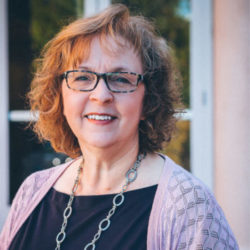
SOMETHING IS ON THE HORIZON
For churches who are more liturgical in tradition, the season of Advent comes a bit easier I think than to us who are Baptist. For us, Advent seems basically like the time we use to get ready for Christmas. We hang the green, bring in the poinsettias, and sing “Silent Night” as soon as the calendar indicates we are four Sundays away from Christmas day. It seems more like a wake-up call that we better get online or stand in line to get our Christmas shopping done because it will be here in the blink of an eye!
However, the season of Advent didn’t start that way and more and more worshippers are grasping the importance of returning to the roots of this tradition. The Advent wreath which we enjoy throughout the season as we progressively light more candles each week, originated in the middle of the 19th century while the actual observance of Advent dates back to the 4th and 5th-century church. In varying early centuries, the church emphasized the season both as a time of penitence and as a time of looking forward to the second coming of Christ.
If we have thought about Advent at all in terms of its meaning for us as Christians, we have probably focused on it as a time of preparing ourselves for the birth of Christ. This is a step in the right direction! However, Fleming Rutledge, in her book, Advent — The Once and Future Coming of Jesus Christ, warns against an exclusive focus on self-preparation. “An exclusive emphasis on Advent as a season of preparation risks putting human endeavor in the spotlight for all four weeks of the season. All the Advent preparation in the world would not be enough unless God were favorably disposed to us in the first place.” Rather, she suggests that Advent is to be a season of watching and waiting. She also reminds us that while all other seasons of the church (Christmas, Epiphany, Pentecost, Lent, Easter to name a few) direct our attention to historical events in the life of Christ, only Advent points toward an event to come — the second coming of Jesus Christ. It is this future focus that makes Advent unique. However, this aspect of the season has been largely lost to most congregations. Rutledge calls Advent “The Time Between” which “contains within itself the crucial balance of the now and the not-yet that our faith requires.” It is a place of tension between Christ’s birth and his return.
As we observe Advent this year at First Baptist, our pastor will be leading us to take a long look at the Christ who is coming back to reign. As we are led through the book of Revelation, we will ponder a Savior and King who is worthy of wonder, worthy of celebration, worthy of awe and adoration, and worthy of our everything. Our Christmas musical will also follow these four themes and lead each of us to answer the question once and for all, “Is He worthy?”
So, if Advent is more than a wreath that counts off the four weeks until Christmas, how can we experience this more-ness for ourselves? Perhaps we can take a tip from Rutledge and spend a little less time trying to “self-prepare” and just a little more time listening. Author Jan Richardson says it like this: “The season of Advent means there is something on the horizon the likes of which we have never seen before… What is possible is to not see it, to miss it, to turn just as it brushes past you. And you begin to grasp what it was you missed, like Moses in the cleft of the rock, watching God’s back fade in the distance. So stay. Sit. Linger. Tarry. Ponder. Wait. Behold. Wonder. There will be time enough for running. For rushing. For worrying. For pushing. For now, stay. Wait. Something is on the horizon.”
— Penny Folsom

